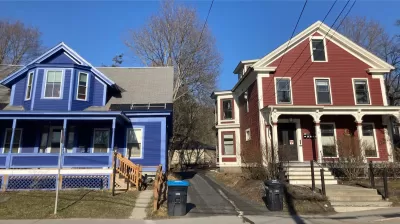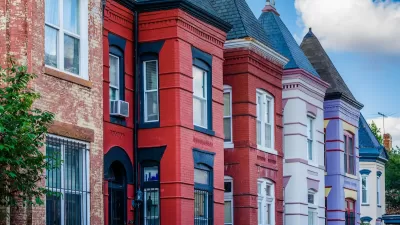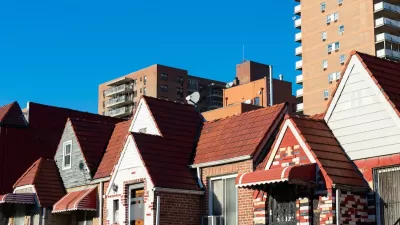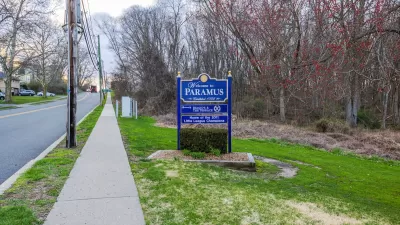The state wants to encourage mid-density development to ease the housing crisis and provide a wider variety of housing options for residents.

A new ‘Homes for All Toolkit’ released in March by the Vermont Department of Housing and Community Development aims to streamline and clarify the development process for missing middle housing. Amy Love Tomasso describes the toolkit for Congress for New Urbanism.
The document provides a guide for small-scale builders and community leaders, highlighting the benefits of small and mid-sized multifamily housing projects.“These home types, which include accessory dwelling units (ADUs), duplexes, small-scale multi-household buildings, and neighborhood-scale mixed-use/live-work buildings, are rooted in Vermont’s traditional development pattern and the New England vernacular style.” Yet over the last century, these traditional housing types have been legislated out of existence.
According to Tomasso, the toolkit “is the start of a movement to bring missing middle housing back to Vermont communities, an opportunity to grow a new generation of developers who value ‘return on community’ as much as return on investment.”
The state plans to pre-approve plans for four different missing middle housing types to make permitting and building easier and more affordable. While cities like Los Angeles have done this at the local scale, Vermont would be the first to issue a statewide pre-approved plan set.
FULL STORY: Vermont is bringing back missing middle housing

Planetizen Federal Action Tracker
A weekly monitor of how Trump’s orders and actions are impacting planners and planning in America.

Map: Where Senate Republicans Want to Sell Your Public Lands
For public land advocates, the Senate Republicans’ proposal to sell millions of acres of public land in the West is “the biggest fight of their careers.”

Restaurant Patios Were a Pandemic Win — Why Were They so Hard to Keep?
Social distancing requirements and changes in travel patterns prompted cities to pilot new uses for street and sidewalk space. Then it got complicated.

Platform Pilsner: Vancouver Transit Agency Releases... a Beer?
TransLink will receive a portion of every sale of the four-pack.

Toronto Weighs Cheaper Transit, Parking Hikes for Major Events
Special event rates would take effect during large festivals, sports games and concerts to ‘discourage driving, manage congestion and free up space for transit.”

Berlin to Consider Car-Free Zone Larger Than Manhattan
The area bound by the 22-mile Ringbahn would still allow 12 uses of a private automobile per year per person, and several other exemptions.
Urban Design for Planners 1: Software Tools
This six-course series explores essential urban design concepts using open source software and equips planners with the tools they need to participate fully in the urban design process.
Planning for Universal Design
Learn the tools for implementing Universal Design in planning regulations.
Heyer Gruel & Associates PA
JM Goldson LLC
Custer County Colorado
City of Camden Redevelopment Agency
City of Astoria
Transportation Research & Education Center (TREC) at Portland State University
Camden Redevelopment Agency
City of Claremont
Municipality of Princeton (NJ)





























